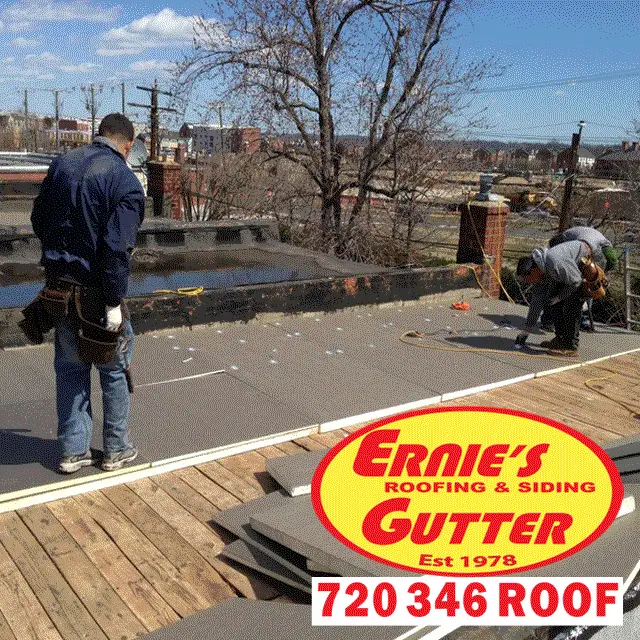A flat roof is an incredibly common type of roofing that is used by homeowners and businesses alike. It offers a number of benefits, such as its relatively low cost, but it also has some drawbacks. One of the most common drawbacks is that flat roofs are more prone to leaks than pitched roofs, and they can be difficult to identify and repair.
In this blog post, we’ll discuss seven common sources of potential leaks on a flat roof. We’ll cover what causes them, how to identify them, and how to prevent them from occurring in the first place. By understanding these common sources of leaks, you can take the necessary steps to protect your flat roof from water damage.
Poor Roof Installation
The most common cause of leaks on a flat roof is poor installation. If a roof is not properly installed, then it won’t be able to protect the building from water damage. Poor installation can be caused by a number of factors, including not using the right materials, not following the manufacturer’s instructions, or not installing the roof correctly.
To prevent this type of leak, make sure that your roof is installed by a qualified roofing contractor. They will know how to properly install the roof to ensure it is watertight.
Weather and Temperature
The weather and temperature can also contribute to potential leaks on a flat roof. Extreme temperatures can cause the roof to expand and contract, which can lead to gaps in the sealant, which can then allow water to penetrate the roof. In addition, high winds can cause debris to collect on the roof, which can then clog up the drainage system and cause water to back up and leak.
To prevent this type of leak, make sure that the roof is regularly inspected and maintained. This will help to identify any potential problems before they become an issue. In addition, it’s important to make sure that the roof is properly sealed to keep water out.
Lack of Roof Maintenance
Another common cause of potential leaks on a flat roof is a lack of maintenance. Over time, the sealant and other materials used to build the roof can wear down, which can lead to gaps and cracks. If these issues are not addressed, then water can seep into the roof and cause damage.
To prevent this type of leak, make sure that you regularly inspect and maintain your flat roof. This should include cleaning the roof to get rid of any debris, repairing any damaged areas, and resealing any areas that may have worn down.
Poor Drainage
Poor drainage can also lead to potential leaks on a flat roof. If the drainage system is clogged or not functioning properly, then water can build up on the roof and cause it to leak. In addition, if the roof is not sloped correctly, then water can pool in certain areas, which can also lead to leaks.
To prevent this type of leak, make sure that the roof is sloped and that the drainage system is clear and functioning properly. This will ensure that water is able to drain off the roof properly and not cause any potential leaks.
Ponding Water
Ponding water is another common cause of potential leaks on a flat roof. Ponding water is caused when water collects in certain areas of the roof and is unable to drain off. This can lead to the roof becoming saturated and eventually leaking.
To prevent this type of leak, make sure that the roof is properly sloped and that any debris is regularly removed from the roof. In addition, you should make sure that the drainage system is functioning properly and that any low-lying areas are filled in with material to help the water drain off.
Poorly Sealed Seams
Another common cause of potential leaks on a flat roof is poorly sealed seams. Seams are the areas where two different sections of the roof meet and sealant is used to keep them watertight. If the sealant is not applied correctly or is not of high quality, then it can wear down over time and cause leaks.
To prevent this type of leak, make sure that the seams are properly sealed. This should be done by a qualified roofing contractor who will make sure that the sealant is applied correctly and that it is of the highest quality.
Aging Materials
Finally, aging materials can also contribute to potential leaks on a flat roof. Over time, the materials used to build the roof can become worn down and damaged, which can lead to leaks. This is especially true of materials that are exposed to the elements, such as sealant and flashing.
To prevent this type of leak, make sure that the roof is regularly inspected and maintained. If any materials are found to be worn down or damaged, then they should be replaced as soon as possible. This will help to ensure that the roof is able to protect the building from water damage.
Leaking roofs can cause serious problems for homeowners and businesses alike. If a leak is not identified and repaired quickly, then it can lead to costly water damage. To protect your flat roof from potential leaks, it’s important to understand the seven common sources of leaks discussed in this blog post. By understanding these sources, you can take the necessary steps to keep your roof in good condition and prevent potential leaks.

